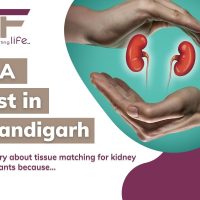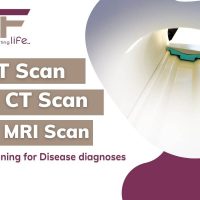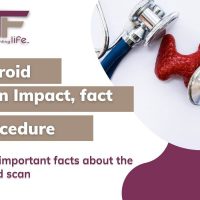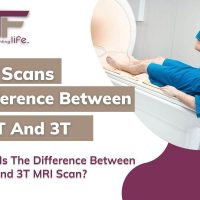What to do if you have fibroids in your pelvis or lower abdomen?
Hey,
Did your doctor say that you have tumors in the pelvis or lower abdomen emerging from abnormal smooth muscle cells & fibrous tissues, the ones that are connected?
Relax!
They are mostly benign in nature. In other words, they are noncancerous.
Do you know what we call them in medical science?
Fibroids, thy be!
Fibroids are likely to vary in size – Sometimes, they appear as small as grains and sometimes as large as a melon!
Studies at UCLA Health show that nearly 70 to 80 percent of females are prone to this condition once in their lifetime. John Hopkins Medicine notes that fibroids develop during the reproductive age in about 20 to 50 percent of women and around 77 percent in the childbearing years.
CContents
What to do if you have fibroids in your pelvis or lower abdomen?
Herein, the abnormal muscle cells in your uterus multiply rapidly due to their encounter with the estrogen hormone, promoting the growth of this lump! However, not everyone gets to witness the symptoms, nor do they always require a full course of treatment.
It is because only one-third of the fibroids become big enough to be during a diagnosis. Also, the risk of developing cancer is very low!
Well, the percentage situates at around 99 percent, and you do not need to panic even if you have this health condition.
Now, you must be wondering what exactly to do if you ever come across such a condition or already did.
That’s why we are here to help! This article shall provide a vivid insight on – What to do if you have fibroids in your pelvis or lower abdomen area?
We aim to show you a step-by-step guide so that even if you fall among the 1%, who are vulnerable to cancer-like complications, you can anytime get away from it and fetch a healthy life thereafter!
So, why wait?
Let us quickly dive into it!
Note on: Who may have fibroids?
Tell me,
1. Are you at your reproductive age?
2. Are you already having a child?
3. Have you crossed the age of 30?
4. Are you near your menopause?
5. Do you have a family history of fibroids or other tumors?
6. Do you eat red meat quite frequently?
7. Are you the one having high blood pressure?
8. Are you suffering from obesity?
9. No offense meant, but are you of African-American ethnic origin?
If the answer to any of these questions is yes, then you are plausibly vulnerable to the development of fibroids.
Disclaimer! They may take the stage, especially when you are overweight. Perhaps, the ratio hereupon is 2 to 3 times greater than the average! Why so? It is because the obese condition leads to a surplus of estrogen the abnormal muscle cells shall persistently encounter, thereby increasing the possibility of fibroids.
What type of fibroids are we talking about here?
Usually, there exist four different types of fibroids, namely, 1) Subserosal Fibroids, 2) Submucosal Fibroids, 3) Intramural Fibroids, and 4) Pedunculated Fibroids.
Complex by name, indeed! But, being categorized by the location they pop up, the types of fibroids are not so difficult to understand.
- The first category, Subserosal Fibroids, are the ones that grow & develop near the outer layer of the uterus called serosa. They are the most common types. And they can even develop outside the uterus in the pelvis region. At that time, they appear larger than expected. It is when you get to feel and understand the symptoms!
- The second category, Submucosal Fibroids, tends to grow & develop towards the internal layer of the uterus called the mucosa. In fact, they may even extend beyond the uterine cavity, growing in the open air! However, this particular type is generally uncommon in nature. They can throw symptoms even when small in size and may have setbacks, unlike the former.
- The third category, Intramural Fibroids, takes place in the uterine muscles or muscular walls of the uterus called the myometrium, typically within its width! This type of fibroid often behaves like the Subserosal ones and comes with the most usual symptoms.
- Well, the fourth category, i.e., the Pedunculated Fibroids, is merely a variation of the first two categories, the Subserosal and Submucosal Fibroids! They grow & develop on the stalk, not the uterine walls, on the outside or inside of the uterus. When growing outside the uterus, they expose mild symptoms, and when growing inside, they are likely to bring forth significant symptoms.
Yes! They are the Fibroids we are talking about in this article, and we shall give you a thorough layout of how to get rid of them!
Symptoms of Fibroids growing in your pelvis or lower abdomen
Before jumping into the process of overcoming them, it stands crucial for you to learn what red flags you may come across when caught with this particular health condition.
That’s right! We shall talk about the symptoms now, and they are as follows!
- Constipation or difficulty in bowel movements,
- Pelvic pain & pressure,
- Back pain, particularly in the lower part,
- Prolonged or heavy periods,
- Pain while having sexual intercourse,
- Leg pains,
- Difficulty in emptying your bladder,
- Frequent urination, specifically at night,
- Vaginal bleeding in-between two menstruation cycles is called spotting, and
- Above all, difficulty in conceiving.
Are you suffering from either of these? Then it’s high time you consult a doctor! That stands to be your first step towards toppling them!
So, are you ready?
How will your doctor identify the Fibroids growing in the pelvis or lower abdomen?
Once your doctor predicts that you have Fibroids in your pelvis or lower abdomen region, she or he shall ask you to go for a diagnosis to confirm the health condition. That is how the process of getting rid of them begins by identifying them!
However, in most instances, these Fibroids get detected in a routine pelvic examination, and that too incidentally. Such an inference comes from irregularities in the shape of your uterus. Here, your doctor may feel & suggest this condition to the presence of Fibroids.
And,
When you already have symptoms of pelvic fibroids or the ones that grow in your lower abdomen region, your doctor shall recommend any of the diagnostic tests as laid down the line.
Ultrasound
Perhaps, your doctor shall recommend the most common and quick test in the first place, and that is none other than Ultrasound. It is the diagnostic process where sound waves lay used to create imaging of your internal body parts.
Are you wondering how?
Well, a radiologist or an ultrasound technician comes into action, bringing a wand-like instrument called a transducer to create electric signals via sound waves when that instrument either goes inside your vagina or when moved over the abdomen. This instrument shall provide images of your uterus, pelvis, and the lower abdomen area directly into the computer screen, where the radiologist and team can map and measure the fibroids if any!
Lab Test
The second diagnostic method for identifying fibroids in your pelvis or lower abdomen area is a Lab Test. I know you are keen to learn what it is exactly! In simple words, a lab test or laboratory test is an analysis of your blood sample performed in a laboratory.
Such a method stands significant when your show symptoms of abnormal menstrual bleeding, either heavy or for a prolonged period. Herein, your doctor wants to confirm the potential cause by checking your blood count.
That is where medical laboratory technicians take the stage, extracting a blood sample from your veins. They analyze the complete blood count (CBC) and others to check & determine whether you have anemia, thyroid problems, blood disorders, or a bunch of fibroids.
Yet,
When either or both of the aforementioned traditional diagnostic techniques fail to identify the underlying fibroids, a different technique lay used. You have to read below to know what they are!
Magnetic Resonance Imaging (MRI)
Another significant latest diagnostic process, emerging with the development of medical science, namely, Magnetic resonance imaging, or in short, MRI, stands efficient in the identification of Pelvic Fibroids & the ones growing in your lower abdomen area.
In this process, large magnets & radio waves lay used to look at the interior of your body, and herein the pelvic and lower abdomen region. No wonder, MRI can offer much better & detailed imaging than any other diagnostic test. That is precisely why this method begins its play when traditional ultrasound fails.
With MRI, your doctor shall not only fetch confirmation about the existence of fibroids but can also identify the exact location, type, & size! Numerous studies reveal that this technique stands practiced, typically in women approaching menopause.
Hysterosonography
Hysterosonography, also known as a saline infusion sonogram, is a diagnostic method preferred by doctors to confirm the presence of Fibroids when traditional methods cannot detect them. Sometimes, called sonohysterography, this process stands crucial for diagnosis when a woman has symptoms like difficulty in conceiving or having a repeated miscarriage.
During this test, sterile salt water or saline lay used for the expansion of the uterine cavity. That is when extracting images of fibroids, especially the Submucosal ones, gets easier than before.
Such a dedicated evaluation appears in the picture with no exposure to ionizing radiation, and therefore much safer than MRI!
Hysterosalpingography
Hysterosalpingography (HSG), also called Uterosalpinography, is nothing but a radiologic X-ray procedure that helps evaluate the shape, size, and condition of your reproductive organs. Doctors recommend this test when infertility is a concern. And she or he predicts the potential cause behind infertility as the existence of fibroids.
The diagnostic process involves the use of dye to highlight your uterine cavity & fallopian tube on the images. Thus, the presence of submucosal fibroids can be easily detected through this test!
One of the most salient features of this test is that it may act somewhat like a treatment at the time of diagnosis for women having infertility issues. It is because the test can help open the fallopian tube, increasing the chance of pregnancy in the near future simply by flushing out the debris or small fibroids, if any. Records note that the increase in pregnancy rate after this situates at nearly 30% in the first 3 months.
Hysteroscopy
Your doctor may ask you to go for a hysteroscopy if you have symptoms like pelvic pain & pressure, vaginal bleeding in between two menstrual cycles, heavy and prolonged periods, or difficulty in getting pregnant. It is somewhat of a minor surgery that requires an overnight stay in the hospital or clinic. And it involves the insertion of a small lighted telescope or hysteroscope into your uterus via cervix!
During this test, your gynecologist shall also inject sterile salt water into your uterus similar to hysterosonography, to expand the uterine cavity. It shall certainly help extract a clear vision of your uterine walls and the opening of the fallopian tube.
Such a technique works even as a method to remove the fibroids if they exist in your pelvis or lower abdomen region. Thereupon, improving the scope of in vitro fertilization (IVF) rate!
Is your doctor predicting any risk factors or complications?
When the diagnosis is complete, your doctor can secure an idea about whether the fibroids growing in your body holds any risk factors or not.
Now, you certainly want to know what the risk factors or setbacks of pelvic fibroids can be!
Although fibroids are very rare to bring forth any complications or setbacks, they can, on rare occasions, be risky.
1. Fibroids can lead to infertility and various other problems during pregnancy, like premature labor, miscarriage within the first 23 weeks, the necessity of cesarean section, and so forth.
2. Fibroids may rarely cause severe anemia or lack of RBCs (Red Blood Cells).
3. Fibroids, if extremely large in size, can create immense pressure upon your bladder and ureter which are meant to flush the urine out of your kidney. In such a circumstance, complication like kidney damage is likely to arise.
4. Submucosal fibroids that are originally rare in nature can lead to poor immunity and heart failure.
Are you extremely worried now? Then, let me tell you that you don’t have to be! The progress of medical science over the years has brought before up quite efficient & effective treatment methods for overcoming fibroids, small or big!
What are the treatment procedures?
Fortunately, medical science offers multiple procedures to treat pelvic fibroids or the ones that reside in your lower abdomen area, and there is no single approach for treating them. That is why your doctor can use a second approach if and when the first one fails.
Here again, the treatment methods stand categorized into different types. What are they? You can discover them now!
- Surgical Procedures – The ones involving minor or major surgeries or an invasion of your body. These processes can sometimes be complex, and you shall have to bear a cut mark for a lifetime. Doctors tend to use this process when the fibroids are extremely large and need total removal.
- Non-Invasive Procedures – They are the ones that do not require any kind of wear & tear in your body. In short, you do not have to go through any kind of internal invasion. However, they can destroy the fibroids even without invading your body. They are usually quick and painless, having no side effects at all!
- Minimally-Invasive Procedures – These processes hold minimal invasion into your internal body. Your doctor does not have to remove the fibroids like a surgical procedure but can destroy them from within! Unlike surgical procedures, they are less painful and do not require an overnight stay in the hospital or clinic. Side effects? Relatively less or none, indeed!
- Medications – These are the methods by which fibroids get eliminated from your body through the use of various medicines. Even though medications do not eliminate fibroids, they may shrink the fibroids and reduce the symptoms you bear. How? The medications target hormones regulating your menstrual cycles and minimize the persistent & excessive creation of estrogen.
- WatchfulWait& See Technique – This technique can serve when you have mild or no symptoms at all. And the fibroids lay detected in a routine pelvic examination. In this case, you can simply wait and watch as the fibroids are bare to interrupt your pregnancy and are likely to disappear once the reproductive hormones drop. The fact that fibroids are not cancerous gives you the opportunity to apply such a treatment technique.
Each of the categories, specifically the first four, consists of various treatment methods that your doctor may seek to pursue. Here they go!
Firstly, there are two types of surgical procedures, and they are – 1) Hysterectomy, & 2) Abdominal Myomectomy.
- Hysterectomy is the process by which your doctor shall remove the uterus from your body as a permanent solution of toppling rare & dangerous fibroids once and for all! However, it comes with a demerit!
Once your uterus is removed, you shall no longer have the ability to bear children. It also means that the removal of the uterus shall directly bring you menopause, and precisely why many individuals opt for an alternative like hormone replacement therapy. The choice is always yours!
- Abdominal Myomectomy is the other surgical procedure where your abdomen is cut open to remove the fibroids living & growing in your pelvis or lower abdominal region. Doctors pursue this method usually when you have myriads of fibroids that are very large or deep.
Although it acts as a better alternative to hysterectomy, and many women tend to opt for this instead of the former, you must understand that you shall have permanent scars on your body. Besides, these scars can sometimes fall heavy on your future fertility.
Next comes the Non-Invasive Procedures in which there is only one single approach in India until today. The approach is MRI-guided Focused Ultrasound Surgery. However, the emergence of new technologies in the field of medicine today contributes to the birth of new treatment methods for fibroids in foreign countries like the USA and the UK.
- An MRI-guided Focused Ultrasound Surgery is the process by which your pelvic or uterine fibroids get destroyed without an incision. Your doctor, together with a team of radiology caregivers, performs this process while you lie down inside an MRI scanner.
The MRI scanner shows the precise location of the fibroids during the ongoing treatment. Alongside, the radiologist brings an ultrasound transducer or wand-like instrument into play, applying lubricant to it. Then, they move it over your abdomen to create sonication into the fibroids. The heat, coming out as an outcome of the sound waves, intends to destroy the fibroids and all remaining fibroid tissues!
That’s it! You are free from fibroids and can go back to your normal routine on the very same day. No pain, no side effects, no risks at all!
Then, there arrives the next category of treating fibroids, i.e., the Minimally-Invasive ones. There are usually five different types of Minimally-Invasive treatments are they are – 1) Uterine Artery Embolization, 2) Robotic or Laparoscopic Myomectomy, 3) Hysteroscopic Myomectomy, 4) Radiofrequency Ablation, & 5) Endometrial Ablation.
- Uterine Artery Embolization is the process in which your doctor shall inject some small embolic agents into the arteries supplying blood to your uterus. As a result, the blood flow to the fibroids cuts off, and they shrink & die.
No doubt, this method is effective in destroying the fibroids in your body itself, and it also gives you relief from abnormal symptoms. Yet again, it is crucial to note that this method can culminate in complications if, anyhow, the blood supply to other organs gets compromised. If that happens in the case of the ovaries, you are likely to face infertility and other reproductive problems!
- Robotic or Laparoscopic Myomectomy is the method wherein your surgeon shall remove the fibroids while keeping the uterus intact. This particular method serves best when fibroids are few, and only a small incision is made to remove them from your uterus or pelvic region.
After the surgeons make the incision, they shall insert a slender instrument to destroy the fibroids. If the fibroids are big in size, they are broken into pieces inside a surgical bag or via the extension of the incision a bit more!
The slender instrument mentioned before has an attached camera that consistently allocates imaging to a computer screen, and your doctor watches them while the surgery is on. What makes this camera significant is – It offers a 3D view of your abdominal and pelvic area, cultivating more precision & flexibility in the treatment procedure.
- Hysteroscopic Myomectomy is the method that involves the removal of fibroids through the insertion of a device called a hysteroscope into your uterus via the vagina and cervix.
It stands viable for people having fibroids inside the uterus, regarded as Submucosal fibroids. Undoubtedly, minimal invasion takes place and is likely to cover a single surgical step only.
Disclaimer! This method may bring into the picture some minor side effects like infections, metabolic complications, gas embolisms, etc. So, whether or not to opt for this method depends entirely on you!
- Radiofrequency Ablation is the minimally-invasive treatment of fibroids, including the use of radiofrequency energy to shrink the blood vessels feeding the fibroids and enabling them to grow. Thereupon, destroying the fibroids as a whole! In most cases, such a method stands undertaken along with a transcervical or laparoscopic process. Sometimes, your surgeon may use a similar method to freeze the fibroids called cryomyolysis.
Here, in a laparoscopic radiofrequency ablation, your surgeon shall make two small cuts in your abdominal area and then insert a sleek instrument that has a camera attached to its tip. This instrument is called a laparoscope, and it locates the fibroids precisely.
When your doctors are over locating the fibroids, they shall deploy them with small needles. These needles are meant to heat up the fibroid tissues and destroy them thereafter. As soon as it happens, the fibroids alter their consistency from being hard to soft and shrink over the next 12 months.
That’s all! You are ready to go back to your daily activities within 5 days or so!
- Endometrial Ablation indulges in the use of heat, microwave energy, electric current, or hot water to destroy the fibroids. During the treatment, the surgeon shall employ a specialized instrument and insert it into your uterus.
This method shall end symptoms like heavy menstrual flow or at least reduce them. It is meant to remove submucosal fibroids but cannot work for subserosal ones.
Alas! You shall not get pregnant after this treatment but can avoid pregnancy developing in your fallopian tube, called ectopic pregnancy.
In terms of medications, there are many of them that your doctor may suggest. All are not meant to destroy or shrink the fibroids but, mostly, to reduce your symptoms. Yet again, there is one medication that can help get rid of these benign tumors from your pelvic or lower abdominal region.
- Gonadotropin-releasing hormone agonists, also called GnRH agonists, are the ones to block the production of estrogen as well as progesterone, thereby treating fibroids. These medications shall put you into a temporary state of menopause, improving conditions like anemia and shrinking the benign tumors.
Some of the GnRH agonists are – 1) Leuprolide, 2) Triptorelin, and 3) Goserelin. You have to use them for not more than a span of 3 to 6 months. It is because long-term use of these agonists can lead to the loss of bones.
- Tranexamic acid, such as Lysteda & Cyklokapron, are among the medicines your doctor may recommend. However, they are not for treatment but to reduce your symptoms. They are non-hormonal medications helping ease out the condition, like heavy periods.
- Progesterone-releasing intrauterine devices (IUD) are among the other medications that your doctor suggests to reduce or eliminate symptoms. They are not the ones to make the fibroids disappear but can get you relief from heavy menstrual bleeding caused by the fibroids residing in your uterus.
Please note that the consumption of progesterone-releasing IUDs can prevent pregnancy!
- Non-steroidal anti-inflammatory drugs are also the ones your doctor may suggest to help you overcome pelvic pain & pressure, backaches, or leg pains. But, they are not to reduce or stop your vaginal bleeding.
Of course, your doctors may recommend anything else apart from the list given here! That is why you have to consult them at every step you take when you come across any symptoms of fibroids!
Only your doctors know what treatment is the best for you!
And,
They shall certainly discuss this with you before opting for any methods!
Are there any home remedies?
Similar to the prevention & cure of all other health conditions, fibroid management also has home remedies!
Why not learn and follow them & be safer than before?
1. Regular exercise, walking, dancing, swimming, yoga, or pilates can help manage fibroids.
2. Including green tea, bananas, and cranberry juice can prevent fibroids from developing.
3. Increasing the amount of potassium in dietary habits by eating more vegetables and plants can help curb fibroids.
4. Avoiding the intake of excess salt in your meal can restrict the fibroids from growing in your body.
5. Eliminating alcohol consumption can similarly refrain fibroids.
6. Also, losing weight, particularly around your waist, may help topple them.
7. Using natural supplements like vitamins can stop fibroids from regrowth.
8. Avoiding foods that are high in sodium can likewise act as a cure for fibroids.
Final Thoughts:
That’s all for today! We have covered almost everything you need to know about the prevention and cure of fibroids in this article, and we hope it serves your purpose. If you have more queries, you can feel free to drop a message directly at our website, www.healthfinder.in, or you can email us at [email protected].
We are eagerly waiting to serve you for your health check-up or treatment at any time.
Perhaps, just a click away!










Comments